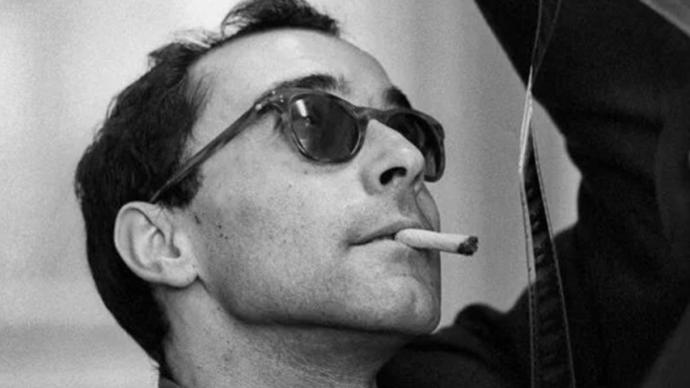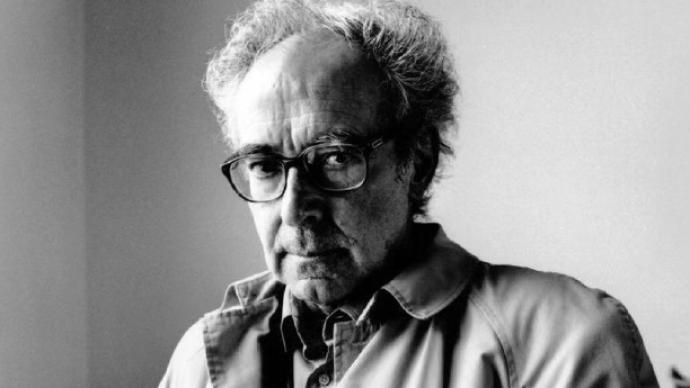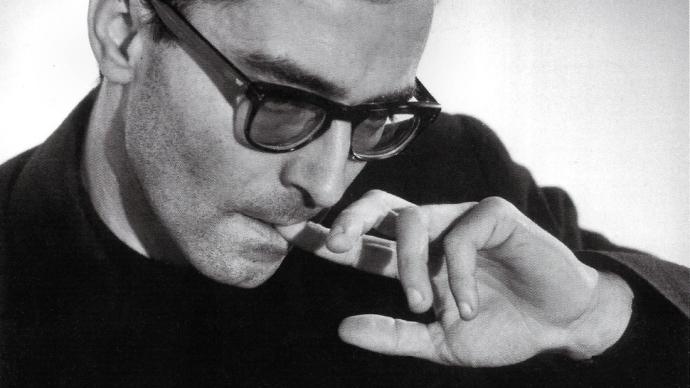
According to French media reports such as "Liberation", the famous director Jean-Luc Godard died on September 13 local time in Basil, Switzerland, at the age of 91. According to Godard's family, he did not die due to illness or old age, but chose euthanasia and "left this world quietly in the company of his loved ones". In this regard, all the directors of the "Cinebooks" who have engraved film history are no longer in this world. It can be said that Godard's death marked the end of the French New Wave movement, the end of a concept of filmmaking, and the end of an era.
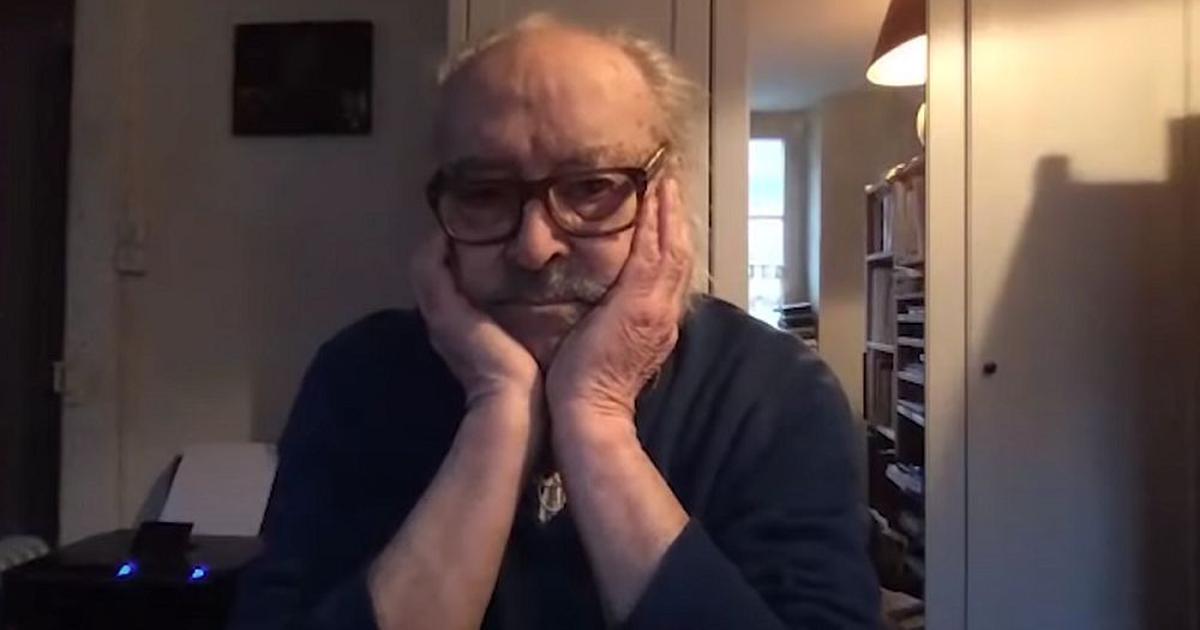
Jean-Luc Godard
"Movies are as important as bread"
Godard was an iconic figure in the French New Wave movement in the 1960s, like François Truffaut, Eric Rohmer, Jacques Rivette, and Claude Chabrol. All of them have written for the film review magazine "Cinebook", and are called "Cinebook" five heroes. After turning from a film critic to a director, he is well-known in the film industry with works such as "Exhausted", "Piero the Madman" and "Contempt", inspiring countless latecomers all over the world. Influential art film director.
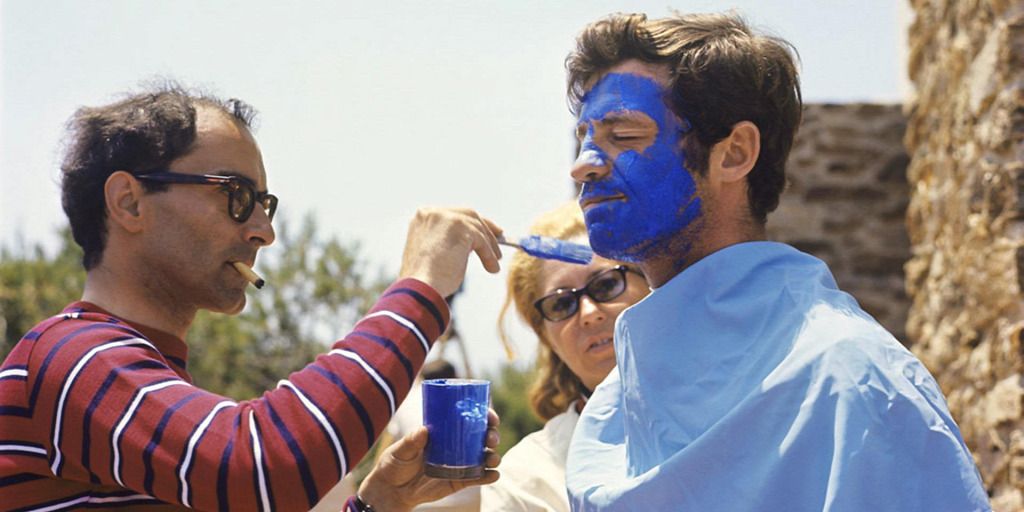
Godard on the set of Pierrot the Madman
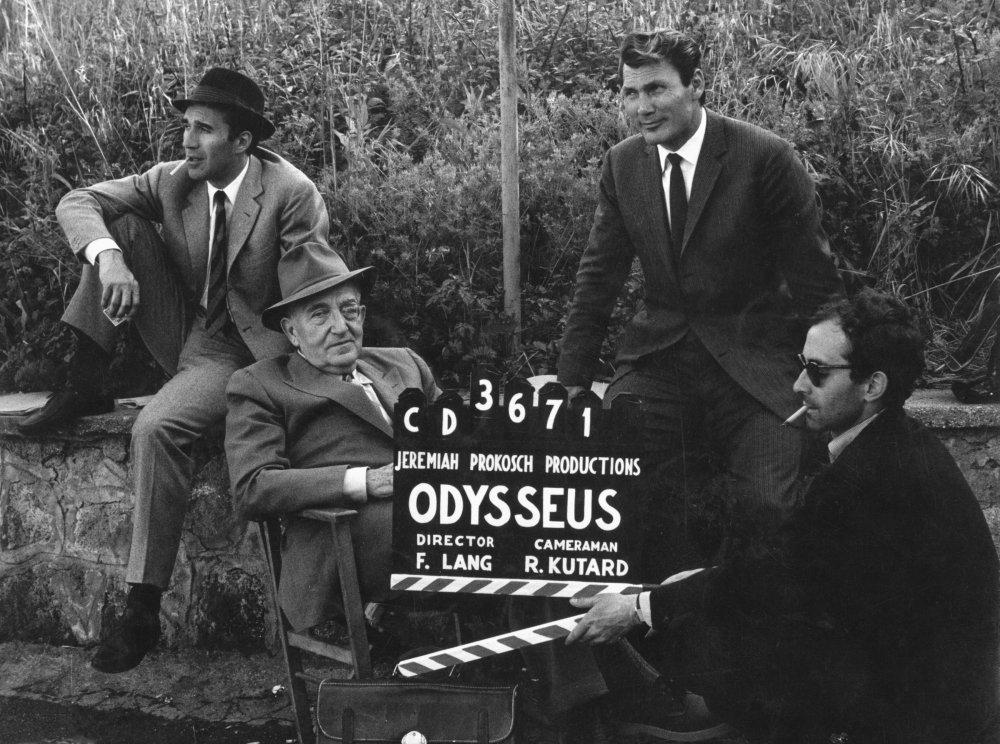
Godard (first from right) and director Frieze Lang (second from left) on the set of "Contempt"
And his iconic image of wearing sunglasses or smoking a cigarette is also widely spread through various media. It can be called a popular symbol in a certain sense, so that even people who have not seen his works are often concerned about this. The name that has been in the film industry for more than half a century has been heard.
Film critic Jiao Xiongping said in his book "The New Wave of French Cinema": "Godard is the most influential, career-changing and maverick of all New Wave movements. He has created a perpetual rebel for himself. His films have subverted mainstream films and middle-class society, ruthlessly questioned the value of modern society, and he abides by principles and does not hesitate to turn against old friends, all of which have become myths in film history. Thinking, it shows that he is the most important creator of the whole new wave movement, with his creation constantly redefining the structure and style of the film. Compared with him, other directors are too conservative and traditional. Truffaut once praised him for changing the History of Cinema: 'The history of cinema can be divided into films before Godard and films after Godard.'"
After Godard's death was reported by the media, French President Emmanuel Macron immediately posted his condolences on social media, calling it a huge loss for France. However, Godard, who settled in the Swiss town of Basil for a long time in the second half of his life, holds dual French and Swiss citizenship to be exact, and spent most of his childhood growing up in Switzerland, the hometown of his father Paul Godard.
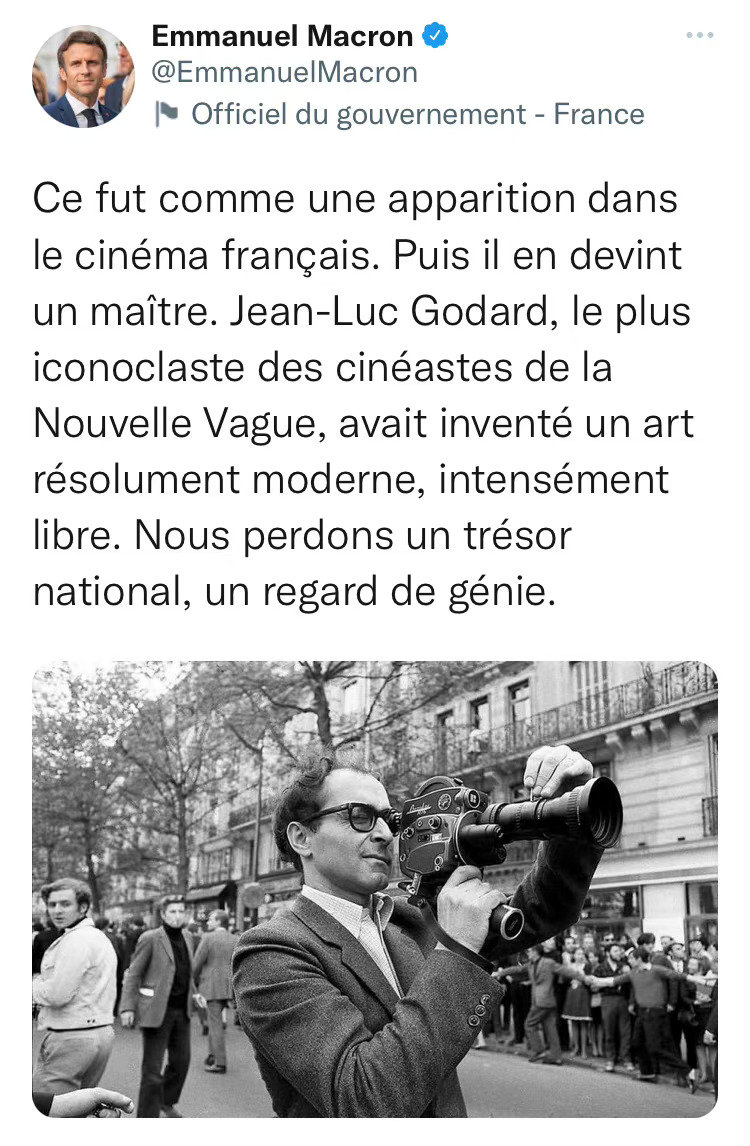
French President Macron sends condolences on social media
"Movies were as important as bread back then"
The Swiss Paul Godard, a doctor from a well-off family, later married Ottil, the daughter of French banking tycoon Julien Monod. Two years after their marriage, little Godard fell to the ground on December 3, 1930, pampered from an early age. At the age of four, the Godard family returned from Paris to live in Nyon, Switzerland, where he spent his childhood and boyhood. After the "World War II", Godard entered the Buffon Middle School in Paris to study high school. Perhaps because his hobbies were too rich and he spent a lot of time on reading books and watching movies, Godard failed to pass the senior year exam. Lost the chance to go to college. With a worry-free life, he simply returned to his home in Switzerland. While preparing to repeat his studies, he also cultivated a hobby of painting.
At the age of 19, Godard succeeded in retaking the exam and got an admission letter for the anthropology major of the University of Paris, but he didn't go to the class very well. A regular visitor to the Film Club and the French Film Archive run by Henri Langlois, he also got to know Rivette, Chabrol, Truffaut, Rohmer and other like-minded people. “At that time, film was as important to us as bread, and we couldn’t live without it every day. We saw film as a tool for acquiring knowledge, a microscope and a telescope,” he recalled years later. .
Just watching a movie is definitely not enough. In 1950, he co-founded Gazette du cinema with Rohmer and Rivette. Although only five issues were published in total, he also won the praise of the famous predecessor film critic Andre Bazin. Notice. In 1951, Bazin founded the "Cinema Manual" magazine, Godard and others began to write for it, and quickly made a name for himself. Meanwhile, the eldest of the group, Rohmer, who is ten years older than Godard, began experimenting with making his own films. In the ten-minute short film "Charlotte and the Steak", which he wrote and directed, Godard not only starred, but also took charge of the stage and stage work, which became his first intimate contact with the film.
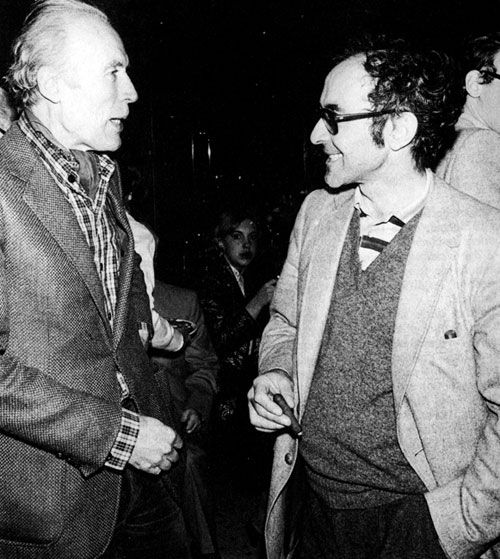
Godard and Eric Rohmer (left), the oldest of the Cahiers du Films
In the autumn of 1952, Godard returned to Switzerland again, and his parents had separated due to emotional differences. At his mother's place, Godard met her lover and came to work at the construction site of the Dixance River Dam in Switzerland through her introduction, and came up with the idea of making a documentary. With a borrowed 35mm camera, he completed his first documentary short film "Concrete Work" on the construction site. But it was also during the filming that his mother died in a traffic accident, which made Godard extremely sad.
Shortly after, he completed his feature short debut in Geneva, "A Coquettish Woman", and then returned to Paris to continue to write film reviews for "Cinébooks" and to shoot short films with his film partners. In the summer of 1959, his feature film debut "Exhausted" officially started shooting in Paris. The story of the film comes from a real story that Truffaut saw from the newspaper. Friends such as Chabrol and Rivette also made suggestions for it. The actors used the newcomers of the French film industry Jean-Paul Belmondo and from Jane Seberg of America.
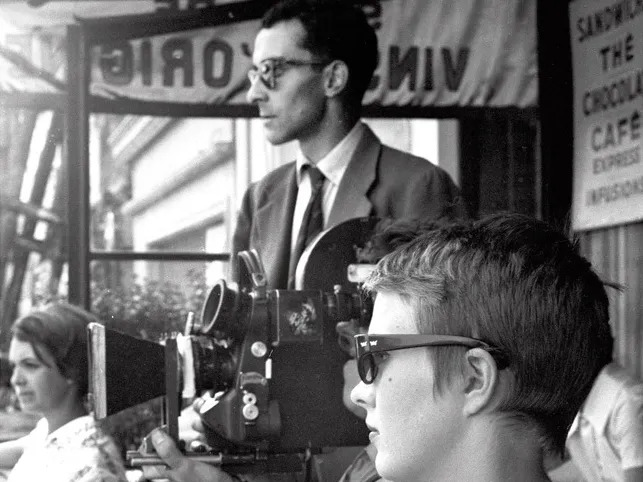
Godard on the set of "Exhausted"
"Exhausted" boldly breaks various traditional film shooting rules, especially the use of jumping techniques and the practice of breaking the fourth wall, allowing characters to face the camera and communicate with the audience, which is of epoch-making significance in the entire history of film development. . In March 1960, "Exhausted" was officially released in Paris. The total number of admissions reached 2.29 million, and the box office was extremely popular. It also allowed the French New Wave movement to conquer the audience again after Truffaut's "Four Hundred Blows". .

Godard and Truffaut in "The Storm in May"
"It takes thirty years to digest it completely"
After "Exhausted" with the color of a Hollywood B-movie, Godard took a big turn and filmed "Little Soldier" with the Algerian war as the background, boldly challenging the nerves of the French government at that time, and the work was once banned. Godard's famous saying "movie is the truth at 24 frames per second" is also from this film. The film is starring his life partner and muse Anna Karina. The two subsequently collaborated on works such as "Women Are Women" and "Lai Huo". They also co-founded Anouchka Film Company and raised funds for the filming of "Women". Outlaws, etc.

Godard and Anna Karina
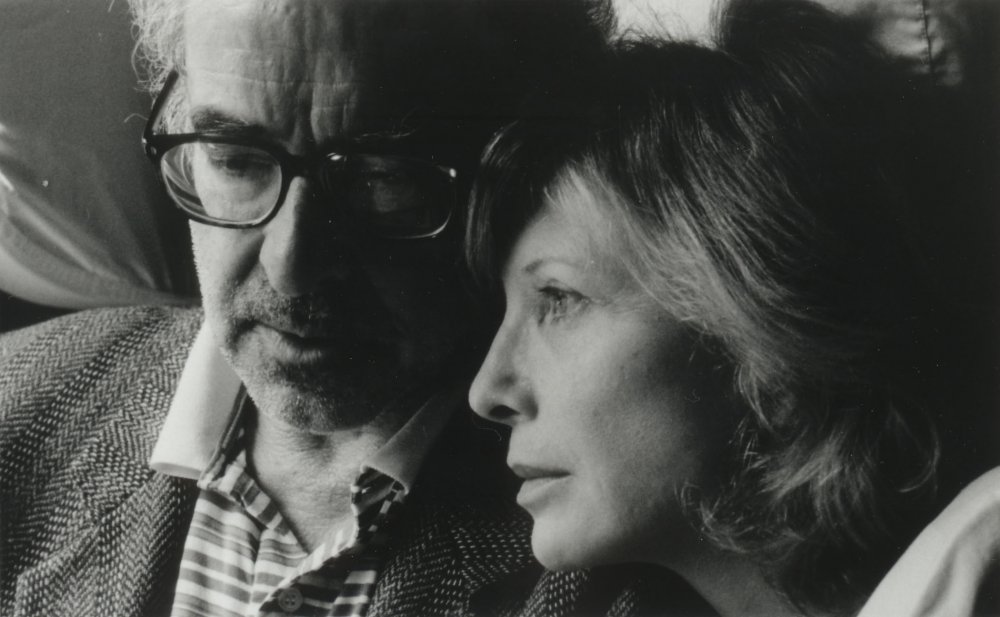
Godard and his last life partner Anne-Marie Miéville
Unlike today’s movie audiences’ inherent cognition of art films, in Europe and the United States in the 1960s, the society was turbulent and ideological liberation was advocated. Art films were by no means unpopular, but often became the darling of the market. The popularity of such works is no less than that of today's Hollywood superhero comic blockbusters. In this regard, Godard's "Contempt" and "Pierro the Madman" are all his representatives. These films firmly grasped the so-called spirit of the times at that time, focusing on expressing the nihilistic and alienated inner existence of the younger generation in the West. In addition, they also starred by box office stars such as Brigitte Bardot and Belmondo. Both applauded and applauded.
In the second half of the 1960s, French social movements became more and more frequent, and Godard's films became more and more political. "Men, Women", "Chinese Girl" and "Weekend" are his representative works of this period. Criticism of capitalist society and consumerism has grown, and sympathy for the oppressed has grown.

Godard on the set of "Men, Women"
In 1970, Godard traveled to the Middle East to film "Until Victory" in support of the Palestine Liberation Organization. Before that, he also participated in the filming of the anti-Vietnam War platter film "Far from Vietnam" - the director of the film also included Dutch Evans, American photographer William Klein, French director Agnès Varda, Alain Resnais, Chris Mack, Claude Lerouche and others. On September 10, Klein also died in Paris at the age of 96. Of the seven co-creators of the film, only 84-year-old Le Roouche is still alive.
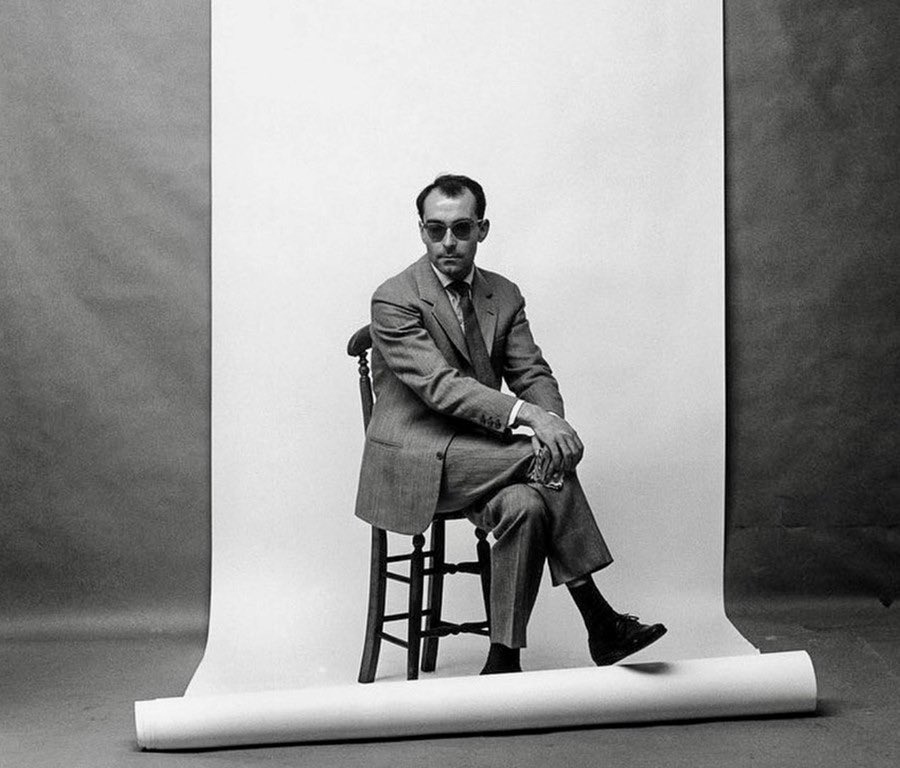
Godard by Klein
In May 1968, the French student movement was fully upgraded. In order to show solidarity, Godard and Truffaut took the lead in making a riot at the Cannes International Film Festival that year, demanding that filmmakers should not be divorced from reality and must stand up and fight side by side with students and workers. In this context, he and Jean-Pierre Goran formed a documentary filming team named after the Soviet filmmaker Djiga Vertov, and visited schools and factories on the spot, and the language of the film also became more radical and thorough. away from the narrative mode of the past.
In 1972, they did not hesitate to use the Hollywood star Jane Fonda, who had just collaborated with them on "Everything's Okay" before, to produce the avant-garde "Letter to Jane". There are almost no moving images in the whole film. It is only based on Jane Fonda's news photos, carrying out iconographic analysis and boldly self-criticism. It is an easy-to-miss relic of Godard's entire film career.
The revolutionary enthusiasm in the hearts of French intellectuals in the 1960s came and went quickly. Meanwhile, his wife Anne Vyazemsky, who starred in "The Chinese Girl" and "The Weekend," also parted ways with him (the two married in 1967, separated in 1970, and divorced in 1979), leaving Godard in the mood Depressed, it is said that he had suicidal thoughts at one time-French director Michel Azanavisius' film "Awe" focused on Godard's experience during this period, but it was not recognized by Godard himself.
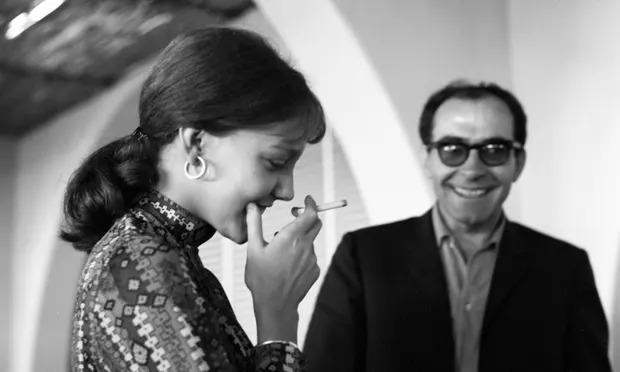
Godard and Anne Wiazemsky
Beginning with "Escape From Each Other" in 1980, Godard returned to the traditional narrative film route, from the famous "Passion" and "Carmen" to the relatively lonely "Detective", "Wandering the World", "Germany Nine Zero" and other works. It can't be said that the upper part is wonderful, but the victory lies in the spirit of experimentation. Of course, his most important work in this period may be the 266-minute "History of Cinema". He made a philosophical analysis of the development of human thought in the 20th century. According to the "New York Times" Film critic Dave Cole said that it is worth watching again and again, "It takes thirty years to fully digest it."
From "Film Socialism" in 2010 to "Goodbye Language" in 2014, and then to "The Book of Images" in 2018, Godard's works have become abstract and obscure again, and the ideas behind the pictures are also different. . As Jiao Xiongping said in "The New Wave of French Cinema": "Throughout his life, he made films constantly seeking how meaning is made, how the system of signs (language and non-language) makes meaning, and how to change our cognition. these questions."
Although he admired Hitchcock, Howard Hawks, Otto Pleminger and other Hollywood directors in his early years, after he became a director, Godard kept a distance from Hollywood. He once said: "No matter how much money you give me, I will They wouldn’t work for Hollywood.” But Hollywood has always treated him with courtesy: studios wanted him to direct “Bonnie and Clyde”; Jane Fonda did not pay for his “All Is Well” ; In 2011, the American Academy of Motion Picture Arts and Sciences also awarded him the Oscar Lifetime Achievement Award, but Godard didn't take it seriously at all, and he didn't even bother to go to the awards ceremony.
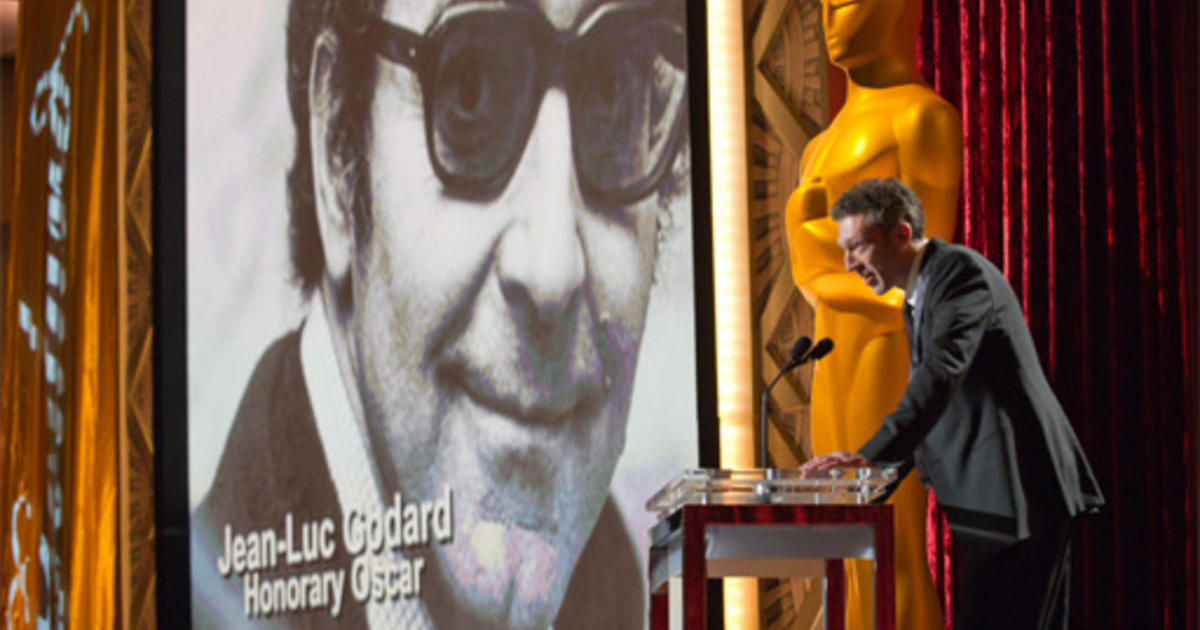
In 2011, Godard was awarded the Academy Award for Lifetime Achievement, but he did not attend the ceremony.
Just in this month's issue of the British "Sight and Sound" magazine, American director Quentin Tarantino sneered at New Wave director Truffaut's poor film quality, "It is full of enthusiasm, but it is full of errors. amateur director". But for Godard, Quentin never denied his enthusiasm. The film company he established in 1991 was named after Godard's works, called Outlaws Film Company. It is said that someone once asked Godard how he felt about this matter, and he replied that "Outlaws" was the worst movie he had ever made, and I didn't expect anyone to use it as his own film company. name.
Due to his advanced age, Godard, who lives in seclusion in the small town of Basil on Lake Geneva, Switzerland, has rarely appeared in public in recent years. When many people watched Agnès Varda's documentary "Face, Village", they expected to see him, but the door of his house was never opened to old friends.

Godard and Agnès Varda
In 2018, Godard's last feature film "The Book of Images" was shortlisted for the main competition unit of the Cannes Film Festival, and he also met with the media at the press conference through remote video to answer everyone's questions. In 2020, Godard and Lionel Baier, director of the Film Department of the University of Art and Design in Lausanne, Switzerland, had a conversation titled "Images in the Time of the New Coronary Epidemic" and made a live video broadcast, which set off a crowd of fans around the world. In December of the same year, his assistant Fabrice Aragno revealed in an interview with the Swiss news agency that Godard, 90, was working on two new films. Now, with Godard passing away, his two unfinished works are destined to remain a perpetual mystery.
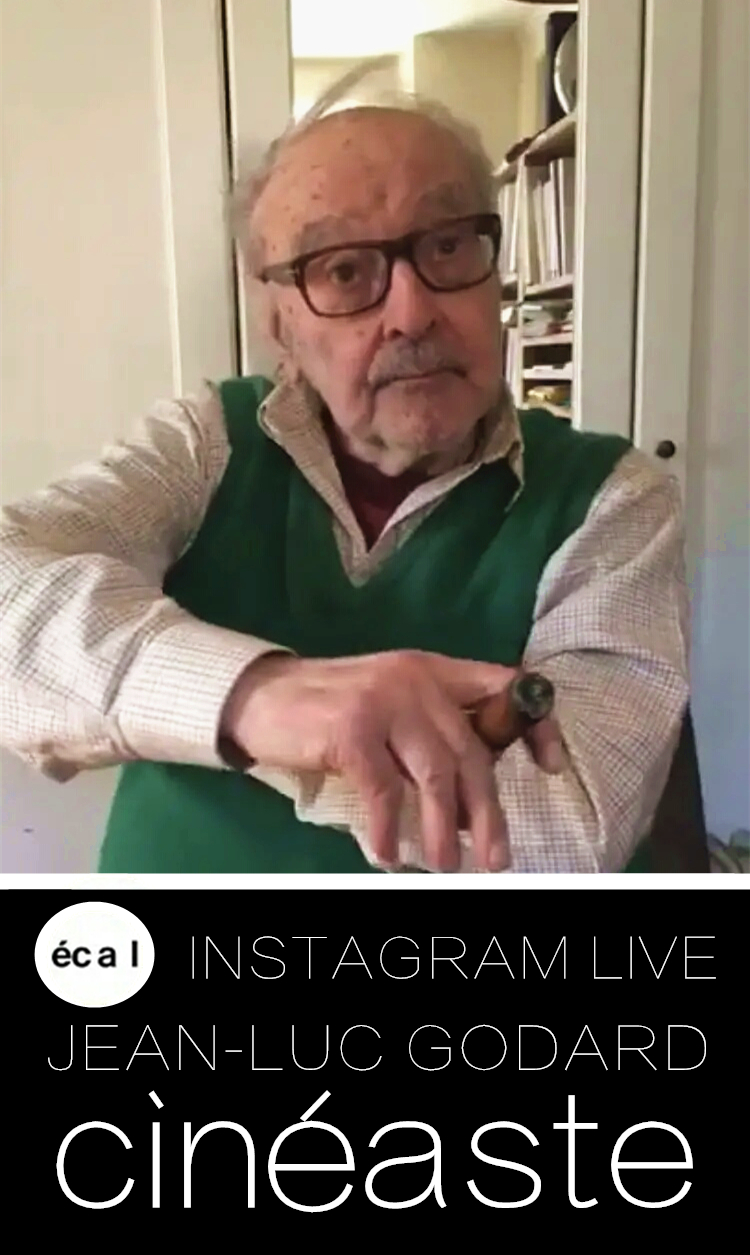
In 2020, Godard conducted a live video on the theme "Images in the time of the new crown epidemic".
